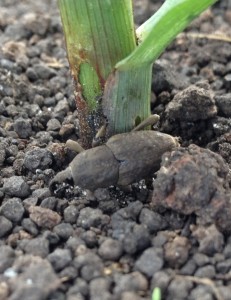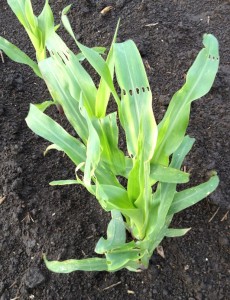Billbug
go.ncsu.edu/readext?898228
en Español / em Português
El inglés es el idioma de control de esta página. En la medida en que haya algún conflicto entre la traducción al inglés y la traducción, el inglés prevalece.
Al hacer clic en el enlace de traducción se activa un servicio de traducción gratuito para convertir la página al español. Al igual que con cualquier traducción por Internet, la conversión no es sensible al contexto y puede que no traduzca el texto en su significado original. NC State Extension no garantiza la exactitud del texto traducido. Por favor, tenga en cuenta que algunas aplicaciones y/o servicios pueden no funcionar como se espera cuando se traducen.
Português
Inglês é o idioma de controle desta página. Na medida que haja algum conflito entre o texto original em Inglês e a tradução, o Inglês prevalece.
Ao clicar no link de tradução, um serviço gratuito de tradução será ativado para converter a página para o Português. Como em qualquer tradução pela internet, a conversão não é sensivel ao contexto e pode não ocorrer a tradução para o significado orginal. O serviço de Extensão da Carolina do Norte (NC State Extension) não garante a exatidão do texto traduzido. Por favor, observe que algumas funções ou serviços podem não funcionar como esperado após a tradução.
English
English is the controlling language of this page. To the extent there is any conflict between the English text and the translation, English controls.
Clicking on the translation link activates a free translation service to convert the page to Spanish. As with any Internet translation, the conversion is not context-sensitive and may not translate the text to its original meaning. NC State Extension does not guarantee the accuracy of the translated text. Please note that some applications and/or services may not function as expected when translated.
Collapse ▲Description
Adult – The Southern corn billbug is a weevil that ranges in size from 1/3 to 1/2 inches long. It is robust and generally ash gray or brownish in color and is usually covered with soil dust shading the insect to a soil-like color. The weevil can often be found attached upside down to the corn seedling near the ground line. See scouting guidelines for seedling pests.
- Egg – The kidney-shaped, cream-colored egg is about 1/8 inch long and 1/32 inch in diameter.
- Larva – The grub is cream colored and legless with a distinct reddish-brown head. It ranges from 1/8 inch to 1/2 inch in length, depending on its maturity.
- Pupa – The pupa is about the same size as the adult. It is initially cream color but changes to reddish-brown before emerging as an adult. The pupal stage lasts from 1 to 2 weeks.
Biology
Distribution – Southern corn billbug (Sphenophorus callosus) is most apparent in the Coastal Plain of the Carolinas and Georgia. However, this pest damages corn over the entire Coastal Plain of the southern states and up the Mississippi River valley into the Midwest. (Surveys for billbug detection should be directed toward border rows and volunteer clumps of corn.)
Host Plants – The southern corn billbug prefers corn, but also attacks sorghum and several species of sedges, particularly yellow nutsedge. Adults will feed on many plants that are not suitable for reproduction.

Adult Billbug
Damage – Adult billbugs are weevils and have jaws at the end of a relative long snout. The snout enables adults to feed into stems of corn seedlings and excavate inner tissues. If seedlings are small, feeding will occur on meristem tissue and result in serious damage or plant death. Damaged plants that do survive are often stunted, twisted, sucker, and show leaves with transverse rows of holes. When the plant reaches the six-to-eight leaf stage a larger, stem diameter limits adult feeding from reaching the critical meristem tissue and damage potential greatly declines. Immature billbugs (grubs) also develop within the root crown area or tunnel the lower stalk. Plants infested with larave often show no obvious symptoms but may be more susceptible to drought stress and die prematurely. Damage by grubs may also result in reduced ear size of up to 40%, depending on time of infestation and other stress factors.

Billbug Injury-Transverse Holes
Life History – The overwintering adults emerge during April and May from litter in fields, ditches and hedgerows and bordering woods. Adults mainly move by crawling but are capable of strong flight. Most ecomomic infestation are found within a mile of corn grown the previous season. Each female feeds, mates, and lays about 200 eggs usually in holes chewed out by the female in the basal area of the host plant stem. In 4 to 15 days, tiny legless, grublike larvae hatch, migrate down the outside of the stem, feed in roots, and tunnel into the lower stalk. There is usually only one larva per cornstalk though as many as five have been known to attack the same stalk. The larvae develop in 40 to 70 days and pupate in or around the excavated taproot. Most pupae occur from July to September. Adults develop after 1 to 2 weeks and either remain within pupal cells or emerge to feed before hibernation. There is only one generation per year.
Billbug Management
The goals of billbug management are to prevent economic damage in the current year and to limit reproduction, so that high carry-over billbug numbers are avoided in the following year. Billbug management includes the following tactics that are intended to be used in concert as a management system.
Agronomic Considerations – Cultural practices can greatly influence pest populations, as well as crop competitiveness and tolerance. In order to produce a vigorous and competitive corn crop, planning and site preparation are required. Optimum soil pH and fertility are essential to vigorous plant growth, high yield, and the crop’s ability to perform when under attack by pests. Likewise, fields with drainage limitations, soil pans and other barriers can suffer from low plant vigor and increased susceptibility to pest related problems. Site selection is particularly important in no-tillage situations since options to correct drainage, pH, and other soil problems are limited, and without tillage certain pests can be more abundant. The corn farmer should avoid planting fields with problems that may seriously limit crop growth and health since this allows pests to express their full influence. Likewise, corn should not be planted in fields where billbugs are at very high levels. In many Coastal Plain areas billbugs wil develop into a major yield limiting problem in 1 or 2 years of continous corn. Other cultural management options that help insure a vigorous/tolerant crop include selection of vigorous and prolific hybrids, early planting, recommended seeding rate, and uniform planting. These factors impact the initial population of seedlings, which influences the threshold for seedling loss. The level of plant loss to billbugs that can be tolerated without economic impact is directly related to the initially established seedling population. Using starter or banded fertilizers is frequently a good pest management practice for seedling pests, especially on cool soils, wet-natured sites, and no-tillage fields, where early growth is often slow. Rapid germination and seedling growth reduces the time that plants spend in the most sensitive stage (seedlings to the six leaf stage) and helps the crop gain a size advantage quickly.
- Rotation – Perhaps the most effective, and often the lowest cost, cultural tactic for reducing billbugs is crop rotation. Rotation of corn with a non-grass crop reduces the levels of many pests by starvation and by preventing reproduction. Rotation may be yearly or in multiples of years and include soybean, wheat+soybean, cotton, or other crops other than sorghum. For best results, at least a yearly rotation is needed, especially on organic soils. Rotational patterns are also important to the management of moderately mobile pests, such as billbugs. In this case, rotation in large units with maximum isolation from last years corn is most effective. The grower should use natural barriers and man-made barriers to his advantage. Effective rotation often requires cooperation from neighbors or the land owner.
- Nutsedge control – Nutsedge control can be important since this weed is an alternate host for billbugs and gives the insect an opportunity to reproduce.
- Early planting – Early planting can often help seedlings attain some size before adult billbugs become fully active.
- Hybrid selection – Corn hybrids that have good cool test performance will grow-off rapidly and perform relatively well. Prolific hybrids (plants that set more than one ear) produce stands that can better compensate for plant loss and are therfore more tolerant of to seedling loss.
- Rapid seedling growth – The use of favorable agronomic practices, vigorous hybrids, starter or pop-up fertilizers, and any practice which increases the rate of seed germination and seedling growth can reduce damage. This can be especially important in cool-wet natured soils and no-tillage situations where early seedling growth is often retarted.
- At-planting insecticides – In areas of high billbug concentration, the use of an at-planting seed treatment or T-banded granular insecticide is essential. The highest labeled rate of insecticides labeled for use on billbugs is necessary.
- Scouting – Scout in high risk billbugs areas soon after the seedlings emerge
- Postemergence insecticides – As directed by scouting results, apply rescue treatment insecticide over the top of seedlings or as a directed treatment.
Scouting Field Corn For Billbugs
Scouting procedure – Scouting seedling corn on a weekly basis from emergence until plants are at the 6 to 8 leaf stage provides information on billbug damage, stand loss, and plant population. Walk a zig-zag pattern over the field looking for insect damaged plants (see description below) or poor stands. When insect damage or poor stands are observed, the insect (or other cause) is identified by digging-up the plant or seed and examining for insect feeding signs. If the problem involves insects, 99 more plants (33 per row for 3 adjacent rows) are examined in the same area of the field (total of 100 plants); record the number of damaged plants (don’t count plants with only superficial feeding). After taking the first sample, nine additional randomly selected places in the field are sampled by examining 100 plants on three or more rows. After the first sample, digging plants is usually not necessary. Take 10 samples per field unless after four (4) samples it is obvious that pests are well above threshold, then sampling can then be discontinued. Note that if no insect damage is observed while walking through the field to initiate the first sample, then samples will not be taken. In fields where billbug are a threat, special attention should be given to field edges bordering last years corn fields and non-rotated corn fields. In the case of field edges, it may be necessary to scout an area approximately 50 rows wide along the edge side of the field as a separate field.
Identifying billbug damage – Seedlings attacked by billbug adults will show one or more of the following symptoms: feeding slits on the lower stem, wilted leaves in the center of the whorl that have been clipped within the stem, cut-off leaves and plants (if plants are very small), larger plants that are twisted and suckered, and leaves with rows of transverse holes in the blades. Damage will usually be most severe on the field edge, especially where bordered by last seasons corn, but may be away from the edges following a warm and windy period when billbugs fly. Billbug adults may be found attached upside-down on seedling stems, often in mating pairs, and sometimes moving across the soil. Adults are more active in the early to mid morning and evening.
Threshold for billbugs – 5% seedling loss in infested areas with a full plant stand. This threshold may be decreased in fields with marginal plant stands.


